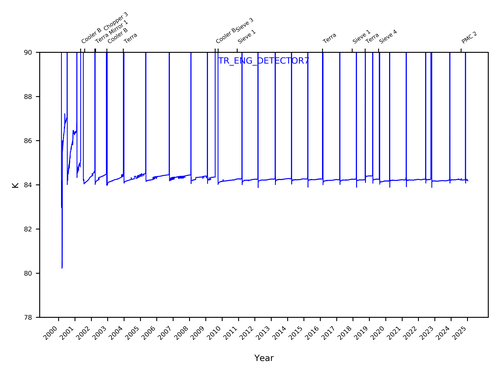
Detector 7 has been holding at a steady temperature of ∼84 K. The vertical lines indicate the decontamination process performed yearly. Between the decontamination cycles, the temperature of the detector increases slightly due to contamination buildup.
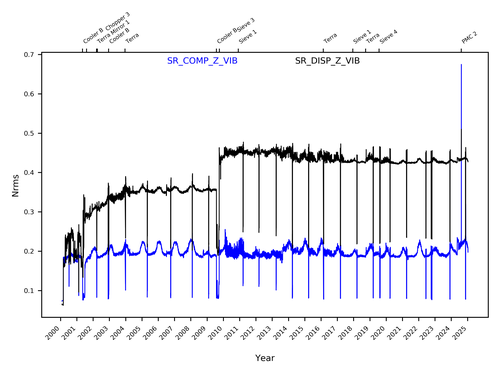
Two accelerometers are used in each of the X, Y and Z axis to measure vibrations. The first cooler anomaly in 2001 caused a slight increase in the axial vibrations for the compressor and a more noticeable increase in the displacer. The 2009 cooler anomaly had an insignificant effect on the axial vibration of the compressor but increased axial vibration in the displacer. The axial vibrations in both the compressor and displacer, follows seasonal variations as well. Despite the anomalies experienced by the coolers, the system vibrations are overall stable.
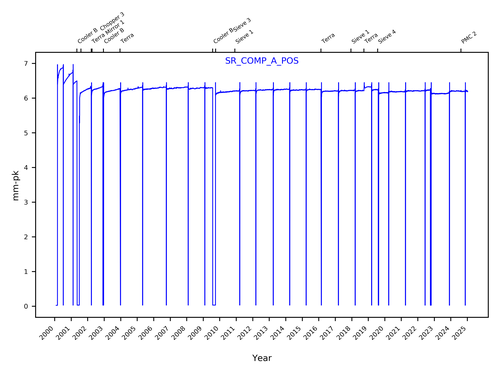
The compressor stroke length for cryocooler A is shown. The vertical lines indicate the decontamination events. Between each decontamination, the compressor stroke increases to compensate for the contamination build-up on the detectors. This increase slows down later in the mission mainly because the contaminants decrease over time. The cooler anomalies are labelled in the figure. The cryocoolers have performed exceptionally well otherwise.
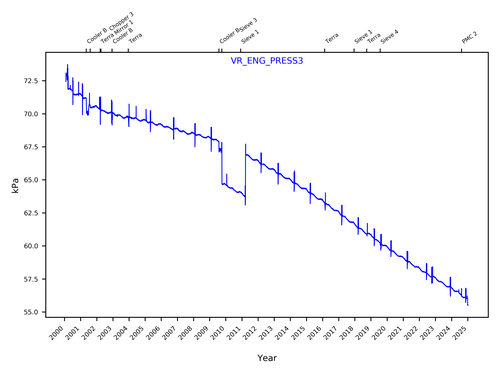
Molecular sieve 3 is connected to LMC 3. Before the cooler anomaly in 2001, the rate of decrease of pressure in LMC 3 was ∼1 kPa per year. After the cooler anomaly until the Sieve 3 anomaly in 2009, the rate of pressure decrease was ∼0.3 kPa per year. After Sieve 3 anomaly was resolved in 2011, the rate of pressure decrease has increased to ∼0.8 kPa per year. Overall, the pressure of LMC 3 has decreased about 27% since launch.

Molecular sieve 4 is connected to PMC 2. The PMCs and their corresponding Sieves have performed nominally throughout the mission until 2019 when Sieve 4 experienced an anomaly. Sieve 4 pressure was stable at ∼77 kPa for the first 5 years of the mission and then decreased by ∼0.2 kPa per year until 2010. After that, the pressure rapidly decreased by a rate of ∼2.3 kPa per year to ∼50 kPa in 2020. This decrease of pressure in the Sieves has been attributed to the aging epoxy in the capillary bonds of the IR window (Andrew S Gibson et al., 2015).
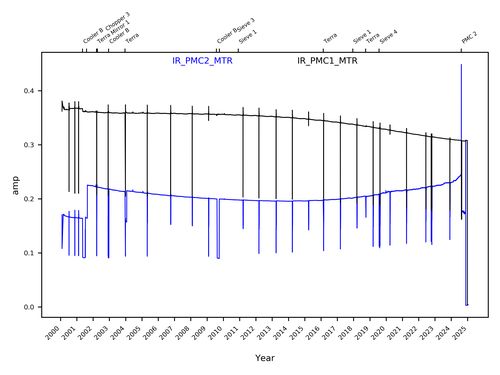
The drive current for PMC 1 motor shows a gradual decrease which is attributed to a slow leaking of the gas in the cell which can cause a resonance shift (Caldwell et al., 2005). PMC 2 motor current followed the same gradual decrease until 2014/2015, when it slowly started to increase. The step change in current observed in 2001 in PMC 2 followed a change in settings after the cooler anomaly in 2001. Following the PMC 2 failure in 2024, PMC 2 was turned off and its current fell to a minimum. In late 2024, PMC 1 was also turned off, along with other elements from Side B of MOPITT, in order to reduce the overall energy consumption of Terra due to satellite power limitations.
